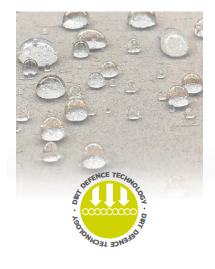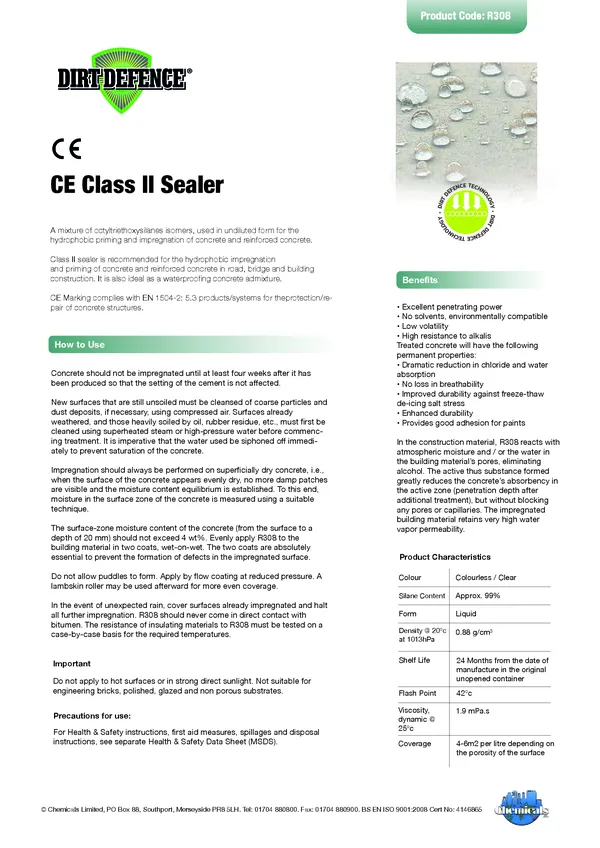R308 CE Class II Impregnating Sealer Datasheet


R308 CE Class II Impregnating Sealer
A mixture of octyltriethoxysilanes isomers, used in undiluted form for the hydrophobic priming and impregnation of concrete and reinforced concrete.
A mixture of octyltriethoxysilanes isomers, used in undiluted form for the
hydrophobic priming and impregnation of concrete and reinforced concrete.
Class II sealer is recommended for the hydrophobic impregnation
and priming of concrete and reinforced concrete in road, bridge and building
construction. It is also ideal as a waterproofing concrete admixture.
CE Marking complies with EN 1504-2: 5.3 products/systems for theprotection/repair of concrete structures.
Concrete should not be impregnated until at least four weeks after it has
been produced so that the setting of the cement is not affected.
New surfaces that are still unsoiled must be cleansed of coarse particles and
dust deposits, if necessary, using compressed air. Surfaces already
weathered, and those heavily soiled by oil, rubber residue, etc., must first be
cleaned using superheated steam or high-pressure water before commencing treatment. It is imperative that the water used be siphoned off immediately to prevent saturation of the concrete.
Impregnation should always be performed on superficially dry concrete, i.e.,
when the surface of the concrete appears evenly dry, no more damp patches
are visible and the moisture content equilibrium is established. To this end,
moisture in the surface zone of the concrete is measured using a suitable
technique.
The surface-zone moisture content of the concrete (from the surface to a
depth of 20 mm) should not exceed 4 wt%. Evenly apply R308 to the
building material in two coats, wet-on-wet. The two coats are absolutely
essential to prevent the formation of defects in the impregnated surface.
Do not allow puddles to form. Apply by flow coating at reduced pressure. A
lambskin roller may be used afterward for more even coverage.
In the event of unexpected rain, cover surfaces already impregnated and halt
all further impregnation. R308 should never come in direct contact with
bitumen. The resistance of insulating materials to R308 must be tested on a
case-by-case basis for the required temperatures.
- Excellent penetrating power
- No solvents, environmentally compatible
- Low volatility
- High resistance to alkalis treated concrete will have the following permanent properties:
- Dramatic reduction in chloride and water absorption
- No loss in breathability
- Improved durability against freeze-thaw de-icing salt stress
- Enhanced durability
- Provides good adhesion for paints
In the construction material, R308 reacts with
atmospheric moisture and / or the water in
the building material’s pores, eliminating
alcohol. The active thus substance formed
greatly reduces the concrete’s absorbency in
the active zone (penetration depth after
additional treatment), but without blocking
any pores or capillaries. The impregnated
building material retains very high water
vapor permeability
